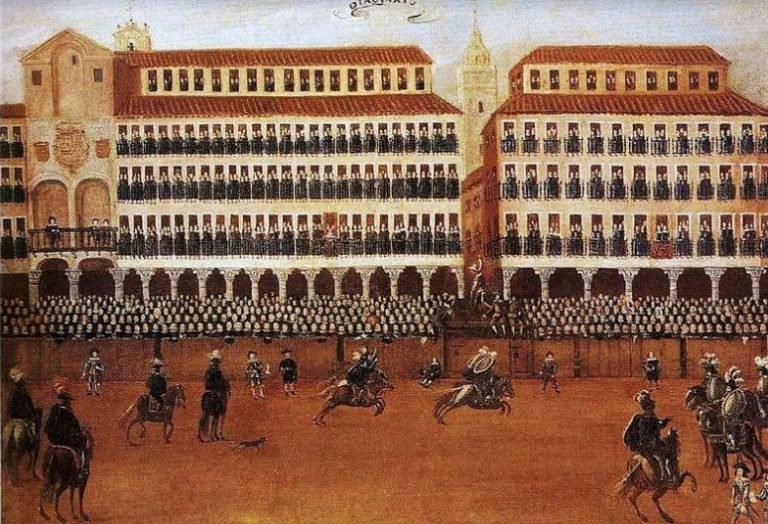Places with a legend - Places with a legend
Img_cabecera_rincones

Breadcrumb
Breadcrumbs
Asset Publisher
Places with a legend
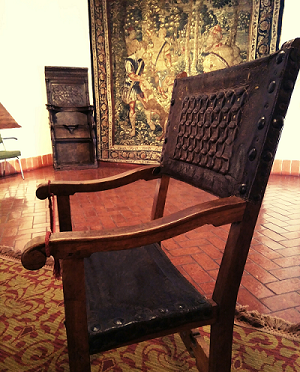 The Devil's chair
The Devil's chair
The red cord that distinguishes one of the armchairs exhibited in the Museum of Valladolid doesn't protect the piece from visitors but rather the curious from the curse that accompanies the frailero seat. Its legend is so gruesome that it was once hung upside down and at a great height in the chapel of the University of Valladolid until the 20th century to prevent any foolish student from daring to rest in it. As the words of its first known owner foretold, it was a matter of life or death.
Its history dates back to the 16th century when the first human anatomy chair in Spain was established in Valladolid. Coinciding with the arrival of a licensed Portuguese and Sephardic scholar, Andrés de Proaza, a nine-year-old boy disappeared. The neighbors of the current Esgueva Street, then called Solanilla, alerted by the disturbing sounds coming from the basement of the young Portuguese, raised the alarm. The scene that the authorities found couldn't have been more macabre: the dismembered body of the child lay on a wooden table. He had been dissected while still alive. During the interrogations, the disturbed criminal confessed to having a pact with the Devil himself, whereby sitting in his chair, a gift from a Navarrese necromancer, the Antichrist would reveal all the secrets of Medicine to him. But, he warned, anyone who used it three times without being a doctor or dared to destroy it would die on the third day.
Forgotten for years in the Faculty of Medicine, the dark legend surrounding the furniture resurfaced years later when a caretaker found it suitable for resting during his free time. Three days later, he was found dead. The same fate befell his replacement, precisely three days after taking office.
A ghost in José Zorrilla's house
The paranormal experiences of our most illustrious poet, José Zorrilla, began when he was a child, the author of Don Juan Tenorio. He was born and lived his early childhood in the current Zorrilla House-Museum, and it was here that his first unusual behaviors manifested, such as his ability to write while asleep - he was a sleepwalker - and conversations with specters.
The poet himself recounts in "Recuerdos del tiempo viejo" how, during one of his escapades while his mother was busy, he sneaked into the guest room, where he conversed with the ghost of his grandmother: "a lady with powdered hair, lace cuffs, and a wide green silk skirt, whom I had never seen before, was indeed occupying the armchair, and with a friendly but melancholic smile, she beckoned me to approach her." "She said to me in a voice that I can't explain where it resonated, whether in the heart, in the brain, or in the ear: 'I am your grandmother; love me very much, my son, and God will enlighten you.'" Frightened, he left the room to tell his parents about the apparition, which earned him weeks of punishment and a silence imposed on what seemed to be a hallucination. Years later, as an adolescent, Zorrilla found a family portrait in which he recognized that specter: it was his paternal grandmother, Doña Nicolasa, who had died years before the poet's birth.
The room in which the specter manifested itself, at the end of a narrow hallway, was a difficult stop on visits to the house-museum when the building was restored, which was the reason for its closure to the public. It was then that workers reported strange occurrences, such as moving vases, lights turning on and off, noises, and drawers opening on their own... Does the ghost of Doña Nicolasa still haunt Zorrilla's house? Just in case, the room has been included again in guided tours of the center.
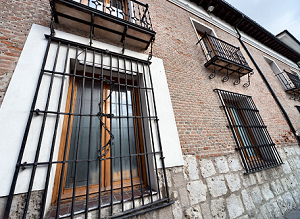 The legend of Philip II's baptism
The legend of Philip II's baptism
Many people in Valladolid tell the story that King Philip II was taken out of a window of the Pimentel Palace, easily recognizable by the chain that binds it, to avoid being baptized at the San Martín parish church, as tradition dictated, and thus celebrate the festivities in the sumptuous San Pablo church. However, it seems more likely that this legend is a distortion of the real events.
The story perpetuated by oral tradition tells that King Carlos V refused to have his firstborn receive the sacrament in the humble San Martín church, as was appropriate for being born in the Pimentel Palace. The old parish hermitage had nothing to do with the current one since it was rebuilt half a century after the controversial baptism that the legend portrays. Not to mention that the luxury of the San Pablo temple was, in the Emperor's view, more fitting for the child destined to rule the world. It should also not be forgotten that the Dominican order was one of the most powerful in Spain, both in wealth and the Inquisition... and that the confessor of the kings, García de Loaysa, belonged to the order.
Carlos I's decision was seen as a major scandal as it pitted the interests of the monarchy against the ecclesiastical authority. In the midst of the commotion, someone came up with the idea of taking the future Felipe II out of the window to satisfy his Majesty's desire and strictly adhere, not without a certain cunning, to the tradition of baptizing the newborn in the parish corresponding to the departure from home.
Despite how deeply rooted this story is among the locals, it is most likely not true. What is known for certain is that the future Philip II was baptized at San Pablo and that the procession passed through an elevated wooden passageway, but with the purpose of safeguarding the Emperor and his family during a challenging moment of his reign: on that same day, news arrived that Carlos V's mercenary armies were assaulting Rome.
The curse of the 'University' lions
Several columns with lions flank the entrance to the Faculty of Law, and we won't reveal their exact number here. Once united by chains, of which some links can still be seen, they delimited the beginning of the area where the rector could administer justice to students under a special jurisdiction that dates back to the Middle Ages. How many lions surround the building? It is likely that there are quite a few people in Valladolid who know, and even many refuse to know the answer: there is an urban legend as unfounded as it is ingrained among students that whoever counts them will never complete their studies.
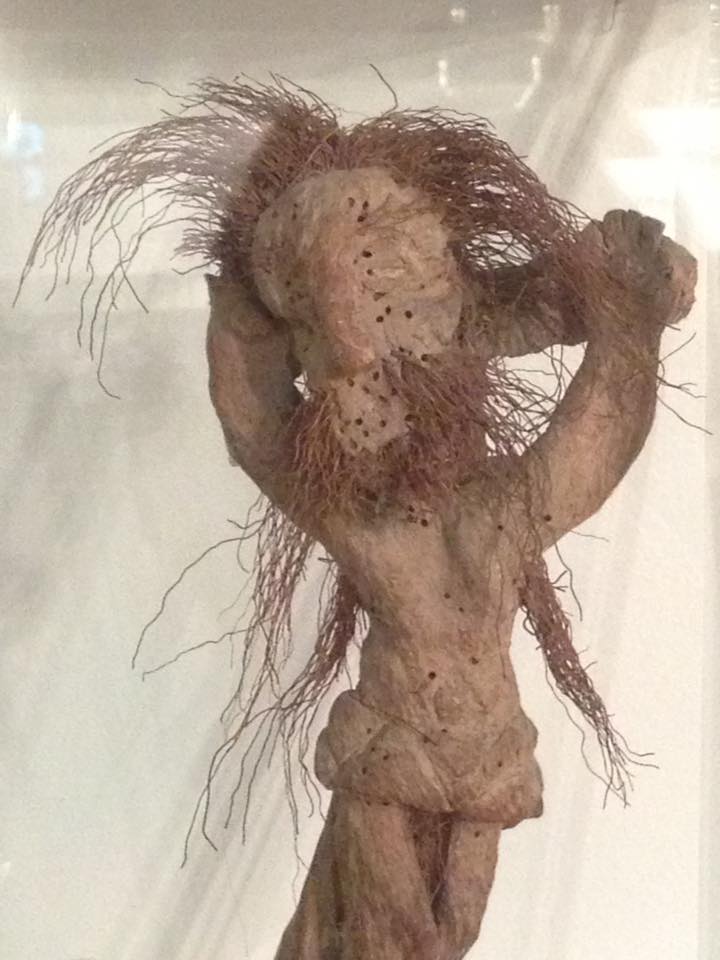 The miracles of the Christ of the Vine sotck
The miracles of the Christ of the Vine sotck
Just 20 centimeters tall, roughly defined in a vine stock trunk with its roots resembling hair, the Christ of the Vine Stock is one of the city's most curious relics. The numerous miracles attributed to this image made it one of the most cherished by the people of Valladolid, especially by the wine guild, and by the monks of San Benito el Real, once proud custodians of this piece that is now exhibited in the Cathedral Museum.
Its prodigies date back to its own origin. According to legend, it was discovered in Toledo by a Jewish farmer who felt the call of the Christian faith when he found the image of the crucified Christ in a vine stock trunk. Immediately, he was baptized by the Archbishop himself, who delivered the valuable piece to the Valladolid monastery. Its popularity quickly spread among the town's residents, who would come to see the relic with their own eyes every May Cross Festival. Its fame grew to the extent that the monks decided to display it on Lenten Fridays and, shortly after, every Friday of the year.
One of the miracles attributed to it occurred in 1714. Valladolid had been suffering from an intense drought for two months when the monks of San Benito decided to organize a petition to the Christ of the Vine Stock. As soon as they appeared at the door, ready for the procession, the sky became overcast and rain soaked the streets, bringing joy to those gathered there.
The rings in Platerías Street and the death of Don Álvaro de Luna
Anyone who looks up while passing through the Ochavo Square (the start of Platerías Street) will notice the iron chains and rings hanging from the wall. For centuries, oral tradition spread the legend that the head of Constable Don Álvaro de Luna hung from these rings after his execution in the Plaza Mayor of Valladolid in June 1453, following a parody called a trial.
The most plausible theory about the presence of these chains is far from macabre. One of the most prosperous guilds, the silversmiths, was located on this street. Their power reached such a level that they were granted the privilege of literally chaining off the street at night to indicate that the passage of authorities in pursuit of someone seeking refuge there was prohibited.
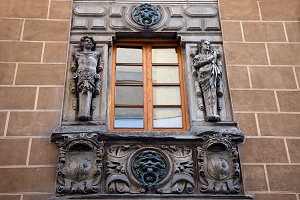 The infidelity of the Countess of Valverde
The infidelity of the Countess of Valverde
One of the palatial houses that attracts the most attention on the so-called "Street of the Palaces," specifically the one located on San Ignacio in the city's map, belongs to the Marquises of Valverde. It is recognizable by its yellow hue and the human figures framing one of the main windows.
The rumors that spread throughout the city were related to an alleged infidelity of the marchioness, involved in an affair with a young servant. While the servant engaged in this adulterous relationship, he transformed into an adult man, arrogant and proud, trusting in his position as a lover. Until he was discovered by the marquis.
Enraged and humiliated, the nobleman decided to shame his wife by placing two sculptures on the facade of their house, representing the woman and her lover. So that the entire city would be aware of the scandalous conduct of the marchioness.
Perhaps the story that circulated among the people of Valladolid was unfair to the Marchioness of Valverde since it is quite possible that she didn't even reside in Valladolid when the two statues were carved.
The Puente Mayor and its cursed origin
According to the story collected by Antonio Martínez Viergol in the 19th century, during a time when the Pisuerga River didn't have a bridge in Valladolid, two important families, the Reoyo and the Tovar, lived in the town. The heir of the Reoyo family harbored a deep hatred for his neighbor, fueled by the attractiveness and charm of the latter. This hatred intensified to the point of tragedy when they both began to vie for the love of a farmer's daughter who lived on the other side of the Pisuerga. It's not surprising that, given the virtues of the young Tovar enumerated in the legend, the girl began to see him, although the intentions of the Don Juan were far from reciprocating the sincere love the girl felt.
One stormy night, as Tovar made his way to their meeting, he crossed paths with Reoyo. While they engaged in a fateful duel that ended with the death of the latter, the torrential rain had turned the Pisuerga into an impassable obstacle. Filled with anger and desperation at the sight of the raging river, Tovar entrusted himself to the Devil himself, perhaps without even suspecting that his call would be answered. But, as the legend tells, the waters of the river parted, and amidst the smell of sulfur, surrounded by a retinue of small incarnate devils, the Devil emerged and promised to build a bridge for Tovar to reach his rendezvous.
The foolish Tovar rushed across the Puente Mayor, but upon reaching the other shore, he found the young woman dead. Guilt tormented the unfortunate man, who spent the rest of his life devoted to begging. The story goes that he died thirty years later, shouting, "I am leaving with her!"
Related Assets
Navigation Menu
Navigation Menu
Organize your trip
Información turística
Tourist Office on Acera de Recoletos
Open Monday to Saturday from 9:30 a.m. to 2 p.m. and from 4 p.m. to 7 p.m. Sundays, from 9:30 a.m. to 2 p.m.
Phone: 983 21 93 10
Tourist Office on San Benito, Calle de San Benito s/n
Open Monday to Saturday from 10 a.m. to 2 p.m. and from 4 p.m. to 7 p.m. Sundays, from 10 a.m. to 2 p.m.
Phone: 983 42 61 93
Tourist Information Point at the Train Station
Open Tuesday to Saturday from 10 a.m. to 2 p.m. and from 4 p.m. to 7 p.m. Sundays, from 10 a.m. to 2 p.m.
Phone: 983 42 60 30
Widget tiempo Valladolid
Related Assets
Maybe you're interested too...

